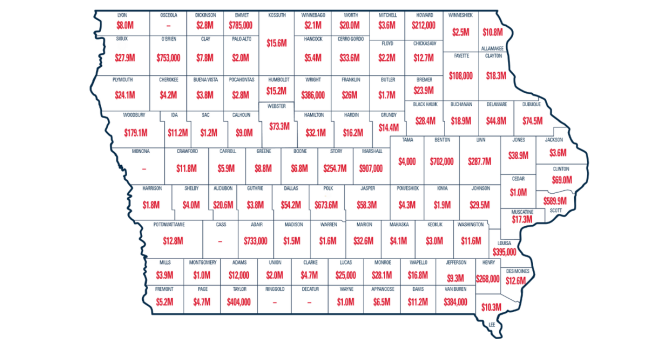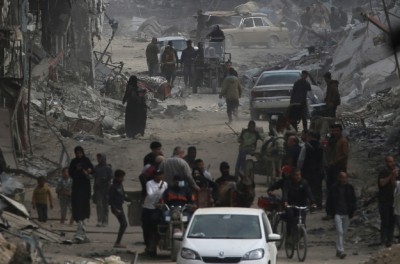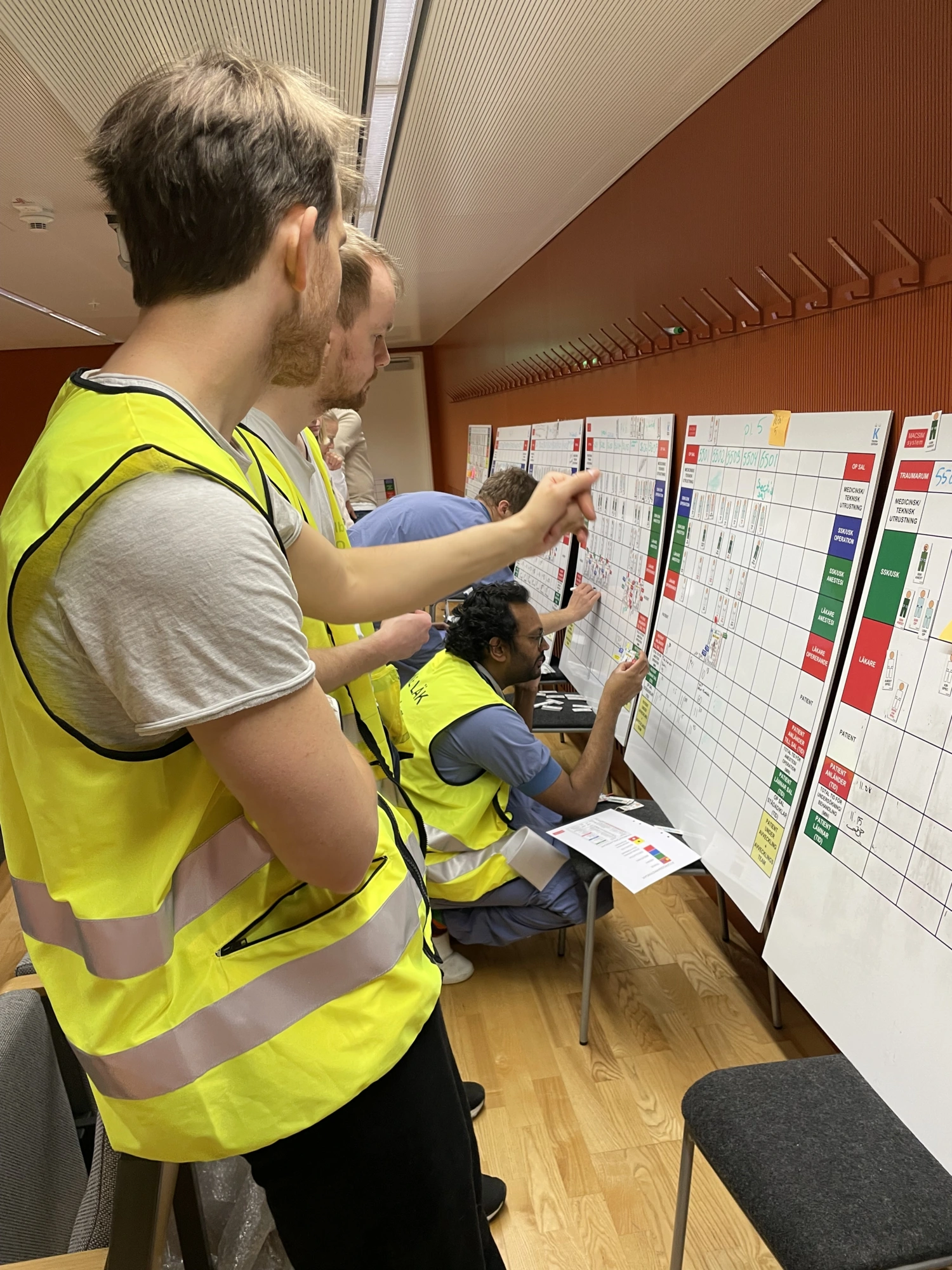Cost of living pressures and debates about women’s social and economic security mean early childhood education and care (ECEC) is a key election battleground.
All major parties are offering increases to subsidy rates but there are big differences in the amount of support promised. Less clear are policies to address the many other issues in the sector. Access to childcare is highly variable depending on where a family lives.
Low pay and difficulty with staff retention are also continuing problems. ECEC is shaping up to be emblematic of wider debates about costs and care, and parties will be eager to demonstrate their commitment to families, women and easing cost of living pressures.
What are the parties offering?
The Coalition’s signature early learning policy involves a substantial increase in the subsidy families receive for the second non-school age child in childcare. This policy was announced in the 2021-21 Budget for an implementation date of July 2022, and then re-announced when the implementation date was brought forward to March 2022. Estimates show the extra subsidy will apply to about 250,000 of the 1.3 million children using childcare annually [15].
Labor is also offering higher subsidies. For the first child, their policy includes a 90% subsidy that declines by 1% for every $5,000 a family earns over $80,000. To ensure that no family will have higher costs under a Labor policy, Labor have also adopted the Coalitions policy for higher subsidy rates for the second and subsequent child. Unlike the Coalition policy, the extra subsidy is also available for school aged children using outside school hours care. Labor claims that 96% of families will be better off under their policy than the current arrangements.
The Greens’ education policy involves free education and for childcare this means covering 100% of the subsidy.
Of the two major parties, Labor is offering the possibility of the most reform outside of subsidies. Labor is proposing a Productivity Commission review to implement a universal 90 per cent Child Care Subsidy for all families, a price regulation mechanism relating to childcare costs and increased transparency of fee and revenue information from providers. But it is unclear how substantial this reform might be, and whether it would involve the possibility of moving away from the parental subsidy model.
The Coalition is yet to make a commitment to structural reform.
The Greens policy would also require a large structural reform of the sector as they have a policy to phase out for-profit education providers. Currently 50% of childcare services are operated by private for-profit providers [16]. The Greens are also promising to extend universal preschool to children aged three and four years for 24 hours per week.
Where are the electorates most affected by early childhood education and care issues?
Perhaps it is the numbers that show why early childhood education and care is such a prominent election issue – there are more than 1.3 million families who use the Child Care Subsidy services every year and hundreds of thousands more who have children enrolled at preschool.
On average about 9,000 families use CCS in each electorate.
Mitchell Institute analysis shows that the big issues in early learning will affect electorates differently.
For instance, difficulty in access is most prominent in regional and rural areas. Tasmania has the marginal electorates where issues relating to access are most acute. The electorates of Braddon and Bass – both Liberal held marginal seats – have some of the lowest levels of childcare accessibility in the country.
Areas with expensive childcare are more commonly found in Liberal held inner-suburban electorates. The electorates with the highest median childcare fees per hour are Wentworth and North Sydney in New South Wales, and Higgins and Goldstein in Victoria. These electorates are the subject of challenges from the ‘teal’ independents.
Data from the Australian Early Development Census (AEDC) reveals issues with a different set of electorates when examining child development. The AEDC measures the progress of children in the first year of school, and highlights the number and location of children starting school developmentally vulnerable. Mapping this data shows that outer suburban and remote electorates with disadvantaged populations have the largest proportion of children starting school developmentally vulnerable.
Appendix 1 of this document shows the three electorates in each state that rank the worst in terms of access, cost and child vulnerability.
What are the likely battlegrounds?
Labor has made ‘care’ (aged care, healthcare and childcare) a central component of its election campaign and the early learning sector is crucial to this focus. Cost of living pressures dominate the current political debate, and the affordability component of ‘care’ is where major parties will be attempting to establish their credentials.
As evidence of their support of the sector, the Coalition will likely use their signature policy of greater subsidies for families with more than one non-school aged child in childcare. However, because this policy has already been implemented, covers about 20% of families using CCS services [15], and announced anew twice in the past twelve months, it is not clear how effective this will be.
Labor will highlight that their plan will improve affordability for many more families compared to the Coalition’s policy. Because of the recent change to Labor policy to keep the higher subsidy rates for second and subsequent children, they can also claim that no family will be worse off. In perhaps a reversal of normal positions, there has already been criticism from the Coalition that Labor’s policies give subsidies to the wealthiest Australian families [17].
The Greens plan for free childcare is the easiest to understand, even if it is unclear how it will be funded or achieved. The plan to stop funding for-profit providers may also have some traction considering the recent media on the wealth of for-profit childcare providers [18].
The focus on affordability can crowd out other issues in the sector. Difficulty in accessing childcare is a very important topic for non-metropolitan regions and the major parties are unclear about their responses. Issues relating to variations in access by location may be covered by Labor’s Productivity Commission review. The Coalition is highlighting the funding of twenty regional childcare centres, a number too small to have any significant nationwide impact on regional childcare availability.
The debates about early childhood education and care are emblematic of wider issues about women, care, wages, and cost of living pressures. Unlike the higher education and vocational education and training sectors, there are much greater differences between parties. The complexity of the early learning systems leaves plenty of room for disputes to flare about who is best placed to deliver promises.
Childcare access and cost and child vulnerability by electorate
Access: Electorates with the lowest levels of access by state (1 is lowest access)
Rank | Electorate | Margin | Children per place |
New South Wales | |||
1 | New England | NAT 14.4% vs IND | 3.96 |
2 | Page | NAT 9.5% | 3.81 |
3 | Chifley | ALP 12.4% | 3.68 |
Victoria | |||
1 | Casey | LIB 4.6% | 3.88 |
2 | Gippsland | NAT 16.7% | 3.49 |
3 | Calwell | ALP 19.6% | 3.42 |
Queensland | |||
1 | Flynn | LNP 8.7% | 4.25 |
2 | Kennedy | KAP 13.3% vs LNP | 3.66 |
3 | Maranoa | LNP 22.5% vs ON | 3.37 |
South Australia | |||
1 | Grey | LIB 13.3% | 6.09 |
2 | Barker | LIB 18.9% | 4.19 |
3 | Spence | ALP 14.1% | 3.78 |
Western Australia | |||
1 | O’Connor | LIB 15.4% | 5.21 |
2 | Durack | LIB 13.5% | 4.76 |
3 | Hasluck | LIB 5.9% | 4.07 |
Tasmania | |||
1 | Lyons | ALP 5.2% | 5.94 |
2 | Braddon | LIB 3.1% | 4.04 |
3 | Bass | LIB 0.4% | 3.32 |
Northern Territory | |||
1 | Lingiari | ALP 5.5% | 4.26 |
2 | Solomon | ALP 3.1% | 2.24 |
Australian Capital Territory | |||
1 | Fenner | ALP 10.6% | 2.24 |
2 | Bean | ALP 7.5% | 2.17 |
3 | Canberra | ALP 17.1% | 1.26 |
Cost: Electorates with highest childcare fees by state (1 is most expensive)
Rank | Electorate | Margin | Median fee per hour |
New South Wales | |||
1 | Wentworth | LIB 1.3% vs IND | $ 14.45 |
2 | North Sydney | LIB 9.3% | $ 13.80 |
3 | Bradfield | LIB 16.6% | $ 13.40 |
Victoria | |||
1 | Higgins | LIB 3.7% | $ 12.95 |
2 | Goldstein | LIB 7.8% | $ 12.75 |
3 | Macnamara | ALP 6.1% | $ 12.75 |
Queensland | |||
1 | Griffith | ALP 2.9% | $ 11.25 |
2 | Brisbane | LNP 4.9% | $ 11.10 |
3 | Ryan | LNP 6.0% | $ 10.75 |
South Australia | |||
1 | Sturt | LIB 6.9% | $ 11.15 |
2 | Boothby | LIB 1.4% | $ 11.05 |
3 | Adelaide | ALP 8.2% | $ 11.05 |
Western Australia | |||
1 | Curtin | LIB 13.9% | $ 12.35 |
2 | Perth | ALP 3.2% | $ 11.70 |
3 | Tangney | LIB 9.5% | $ 11.60 |
Tasmania | |||
1 | Bass | LIB 0.4% | $ 10.25 |
2 | Clark | IND 22.1% vs ALP | $ 10.00 |
3 | Braddon | LIB 3.1% | $ 9.75 |
Northern Territory | |||
1 | Solomon | ALP 3.1% | $ 10.00 |
2 | Lingiari | ALP 5.5% | $ 6.95 |
Australian Capital Territory | |||
1 | Canberra | ALP 17.1% | $ 12.25 |
2 | Fenner | ALP 10.6% | $ 12.00 |
3 | Bean | ALP 7.5% | $ 11.85 |
Child vulnerability: Electorates with the highest proportion of children starting school developmentally vulnerable in one or more domain by state (1 is most vulnerable)
Rank | Electorate | Margin | Children developmentally vulnerable (%) |
New South Wales | |||
1 | Fowler | ALP 14.0% | 32.0% |
2 | Chifley | ALP 12.4% | 28.5% |
3 | Parkes | NAT 16.9% | 28.4% |
Victoria | |||
1 | Calwell | ALP 19.6% | 32.0% |
2 | Gippsland | NAT 16.7% | 26.8% |
3 | Fraser | ALP 18.1% | 26.1% |
Queensland | |||
1 | Kennedy | KAP 13.3% vs LNP | 31.5% |
2 | Hinkler | LNP 14.5% | 31.3% |
3 | Herbert | LNP 8.4% | 30.7% |
South Australia | |||
1 | Spence | ALP 14.1% | 32.0% |
2 | Grey | LIB 13.3% | 28.9% |
3 | Barker | LIB 18.9% | 26.6% |
Western Australia | |||
1 | Durack | LIB 13.5% | 28.1% |
2 | Brand | ALP 6.7% | 26.5% |
3 | Burt | ALP 5.5% | 26.2% |
Tasmania | |||
1 | Lyons | ALP 5.2% | 26.9% |
2 | Braddon | LIB 3.1% | 25.0% |
3 | Bass | LIB 0.4% | 23.9% |
Northern Territory | |||
1 | Lingiari | ALP 5.5% | 46.1% |
2 | Solomon | ALP 3.1% | 29.9% |
Australian Capital Territory | |||
1 | Fenner | ALP 10.6% | 27.8% |
2 | Bean | ALP 7.5% | 26.7% |
3 | Canberra | ALP 17.1% | 25.0% |








